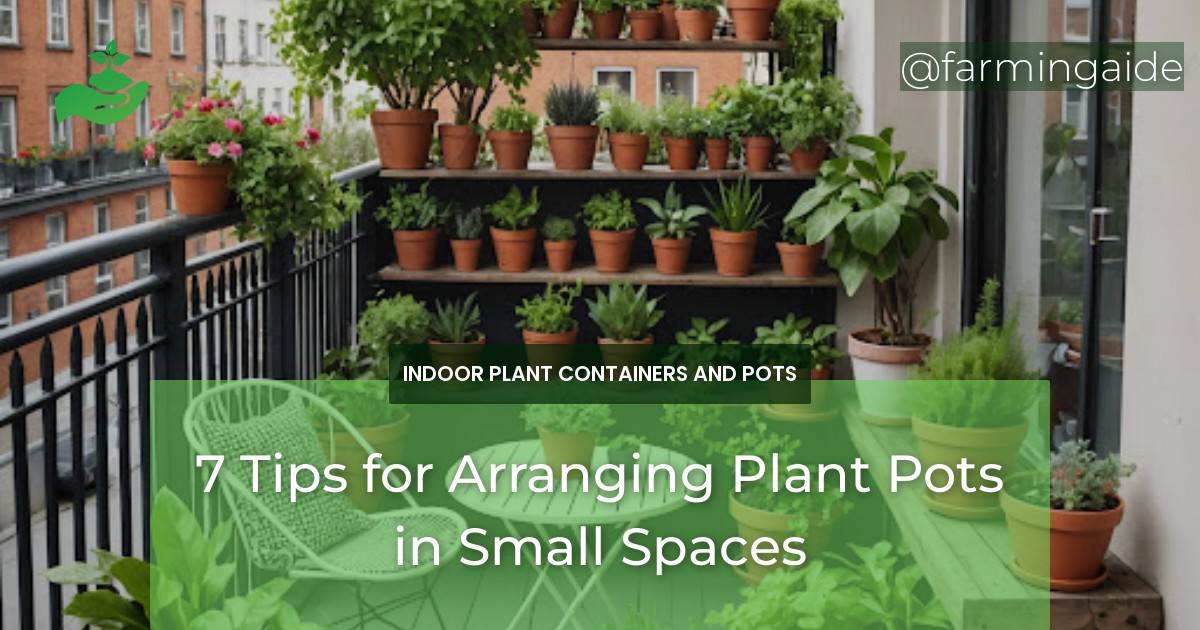Are you tired of feeling like your small space is limiting your green thumb? Do you dream of having a lush oasis in your tiny apartment or condo? You’re in luck! With a little creativity and the right strategies, you can turn even the smallest of spaces into a thriving garden. In this article, we’ll share 7 tips for arranging plant pots in small spaces, so you can bring the outdoors in, no matter how limited your space may be.
Key Takeaways
- Assess your available space and consider vertical gardening solutions.
- Choose the right pots and planters for your space and plants.
- Group plants strategically to maximize space and visual appeal.
- Utilize windowsills and balconies to increase your gardening space.
- Don’t forget about maintenance and care to keep your plants thriving.
Understanding Your Space
Before you start arranging your plant pots, it’s essential to understand the space you’re working with. Take stock of your available space, considering the size and shape of your room, the amount of natural light, and the temperature. This will help you determine the types of plants that will thrive in your space and the best way to arrange your pots.
Assessing Available Space
Measure your space carefully, taking note of any obstacles or limitations. Consider the height of your ceiling, the width of your windowsills, and the depth of your shelves. This will help you determine the maximum size of your pots and the number of plants you can fit in the space.
Light and Temperature Considerations
Light and temperature are crucial factors to consider when choosing plants for your small space. If your space receives direct sunlight, you’ll want to choose plants that thrive in bright light. If your space is dimly lit, look for plants that can tolerate low light conditions. Similarly, consider the temperature range of your space and choose plants that are comfortable in that range.
Choosing the Right Pots
The right pots can make all the difference in small space gardening. Not only do they need to fit in your available space, but they also need to provide the right environment for your plants to thrive.
ALSO READ
Material and Size of Pots
Choose pots made from materials that fit your style and space. Ceramic pots are a popular choice for small spaces because they are lightweight and come in a variety of sizes. Consider the size of your pots carefully, taking into account the mature size of your plants and the space available.
Drainage and Aesthetics
Make sure your pots have proper drainage to prevent waterlogged soil. You can add a layer of small rocks or broken pottery at the bottom of your pot to improve drainage. Don’t forget about aesthetics! Choose pots that fit your style and add visual appeal to your space.
Vertical Gardening Solutions
One of the biggest challenges of small space gardening is finding enough space for all your plants. Vertical gardening solutions can help you maximize your space and add visual interest to your walls.
ALSO READ
Wall-mounted Planters
Wall-mounted planters are a great way to add some greenery to your walls without taking up valuable floor space. Choose planters that fit your style and come with a built-in watering system to make maintenance a breeze.
Hanging Baskets and Shelves
Hanging baskets and shelves are another great way to add some vertical interest to your space. Look for baskets and shelves made from durable materials that can support the weight of your plants.
Grouping Plants Strategically
Grouping plants strategically can help create a visually appealing display and make the most of your available space.
Plant Compatibility
When grouping plants, consider their growing conditions and needs. Group plants that have similar requirements, such as light and water needs, to create a harmonious display.
Visual Appeal and Space Utilization
Consider the visual appeal of your plant grouping, taking into account the color, texture, and size of your plants. Group plants in a way that creates a visually appealing display and makes the most of your available space.
Utilizing Windowsills and Balconies
Don’t forget about the potential of your windowsills and balconies! These areas can provide the perfect spot for plants that thrive in bright light.
Maximizing Window Space
Make the most of your windowsill space by using planters that fit snugly on the sill. Consider using a window box or a planter with a built-in trellis to add some vertical interest.
Balcony Garden Ideas
If you have a balcony, consider adding some outdoor furniture and decor to create a cozy retreat. Use planters and pots that are specifically designed for outdoor use and can withstand the elements.
Maintenance and Care
To keep your plants thriving, it’s essential to provide proper maintenance and care.
Watering and Feeding
Water your plants when the soil feels dry to the touch, and fertilize them regularly to provide essential nutrients.
Regular Pruning and Cleaning
Regular pruning helps maintain the shape and size of your plants, while cleaning up dead or dying leaves and stems keeps your plants healthy and pest-free.
Conclusion and Final Tips
With these 7 tips for arranging plant pots in small spaces, you’re ready to turn even the smallest of spaces into a thriving garden. Remember to assess your available space, choose the right pots, and group plants strategically. Don’t forget about vertical gardening solutions, utilizing windowsills and balconies, and providing proper maintenance and care. Happy gardening!


